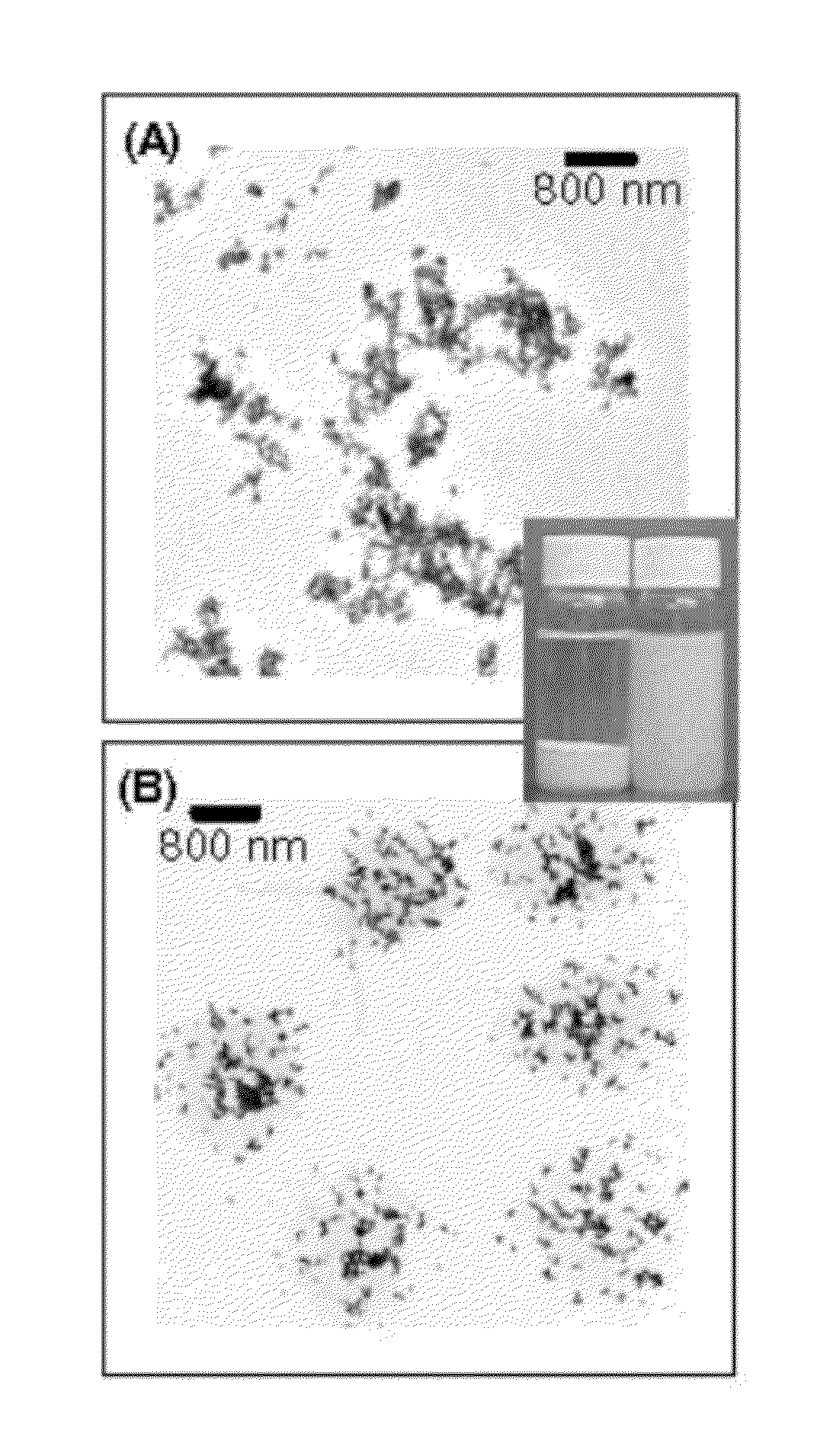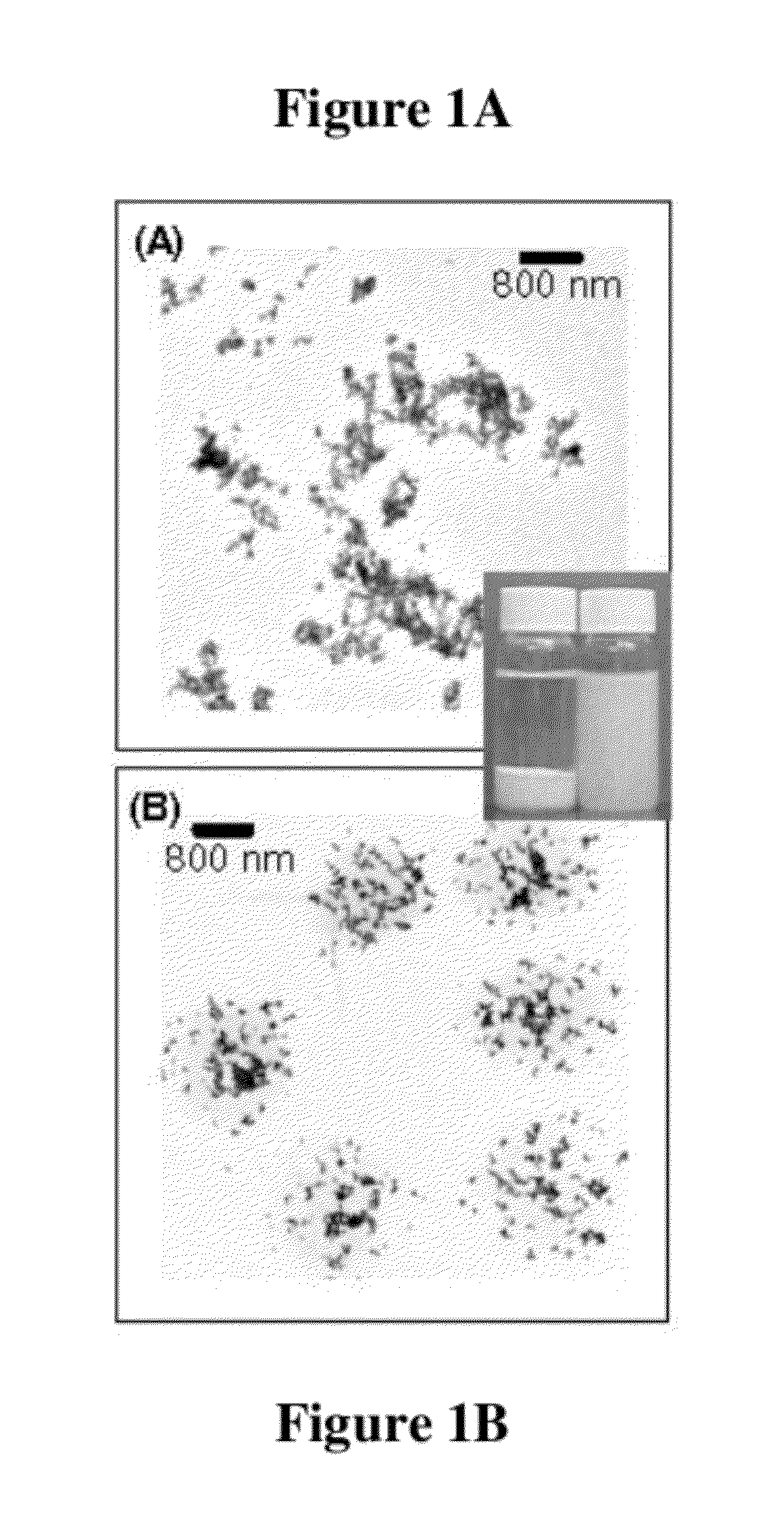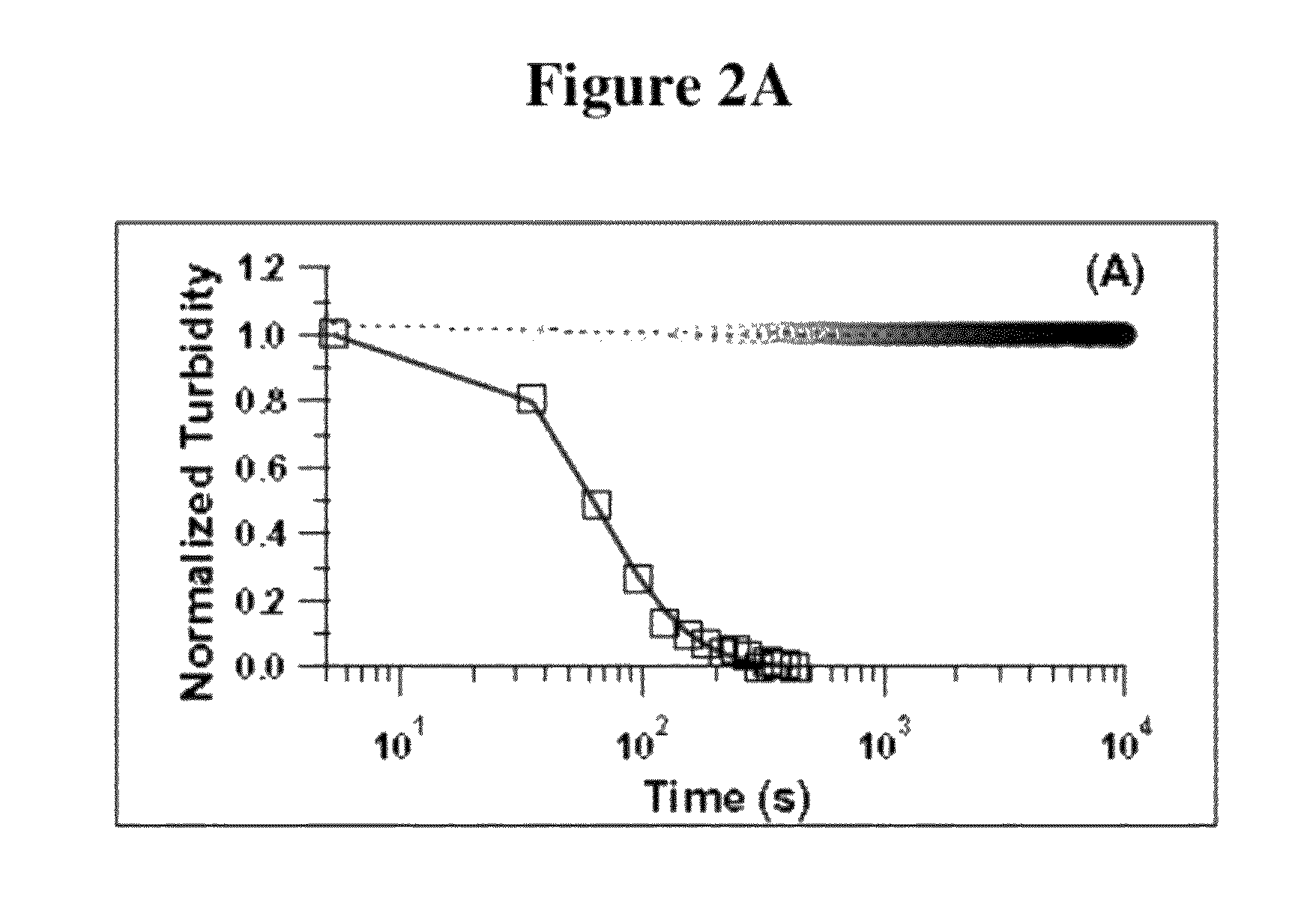Functional composites formed from colloidal polymer particles with photocatalytic metal oxide (MOx) nanoparticles
a technology of colloidal polymer particles and metal oxides, which is applied in water/sewage treatment by ion exchange, water treatment compounds, and separation processes, etc., can solve the problems of limiting the usefulness of these strategies, reducing the photocatalytic activity of titania nanoparticles, and limiting the use of titania nanoparticles in waste-water treatment applications, etc., to achieve the effect of simple gravity separation of photocatalysts
- Summary
- Abstract
- Description
- Claims
- Application Information
AI Technical Summary
Benefits of technology
Problems solved by technology
Method used
Image
Examples
examples
[0052]Unless otherwise noted, all chemicals purchased were reagent grade from Sigma-Aldrich (WI) and used without further purification. Water used in experiments was purified using an EasyPure UV system (Barnstead, Iowa). A 0.2 nm filter in this system removed particulate matter.
example i
PNIPAM Microgel Synthesis
[0053]N-Isopropylacrylamide (2 g) was recrystallized from hexane and dried under vacuum prior to use. Surfactant free precipitation polymerization of NIPAM using N,N-methylenebisacrylamide (MBAA) (0.08 g) as a cross-linker was initiated using potassium persulfate (KPS) (0.04 g) in an aqueous medium at 75° C. The solution was purged with nitrogen gas for 45 min before polymerization. After a polymerization time of 5 hours, the reaction mixture was cooled down. The PNIPAM microgels formed were collected and purified by repeated centrifugation and washing with deionized water.
example ii
Peripheral Penetrating (PP) Microgel Synthesis
[0054]The PNIPAM microgels (1 g) formed in Example I were mixed with acrylic acid (1 ml) and dispersed in deionized water at 0° C. [22]. After the solution was purged with nitrogen, KPS (0.04 g) and the accelerator tetramethylethylenediamine (TEMED) (0.1 ml) were added. The reaction was allowed to proceed for 5 hours in the ice bath. The product was cleaned in a manner similar to the PNIPAM microgels above.
PUM
| Property | Measurement | Unit |
|---|---|---|
| temperature | aaaaa | aaaaa |
| diameter | aaaaa | aaaaa |
| diameter | aaaaa | aaaaa |
Abstract
Description
Claims
Application Information
 Login to View More
Login to View More - R&D
- Intellectual Property
- Life Sciences
- Materials
- Tech Scout
- Unparalleled Data Quality
- Higher Quality Content
- 60% Fewer Hallucinations
Browse by: Latest US Patents, China's latest patents, Technical Efficacy Thesaurus, Application Domain, Technology Topic, Popular Technical Reports.
© 2025 PatSnap. All rights reserved.Legal|Privacy policy|Modern Slavery Act Transparency Statement|Sitemap|About US| Contact US: help@patsnap.com



